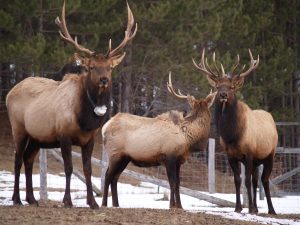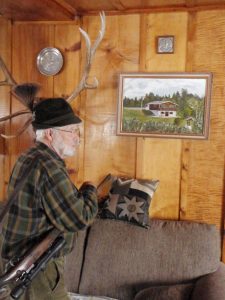
Elk, scientifically known as Cervus Elaphus, were native to Ontario, at one time. Thus this re-introduction as versus introduction. Elk belong to the deer family and in Ontario they are second in size only to the moose. Overhunting and loss of habitat to human settlement lead to their extermination in earlier years. The two small Burwash herds, totaling some 60 animals in 2000, were the result of introductions in the 1930’s. In 1997 the Ontario Ministry of Natural Resources (MNR) approved a plan to restore elk to the province. Initially 6 sites were selected – Lake of the Woods, Bancroft/North Hastings, Lake Huron North Shore, Nipissing-French River (including the area where the remnant herds exists), Frontenac Axis and the Ottawa Valley. One hundred to two hundred animals were to be released at such sites in hopes that they would become established self-sustaining herds.
Elk Island National Park is near Edmonton, Alberta. In co-operation with the Canadian Food Inspection Agency (CFIA) the park operates the most rigorous elk disease management program in North America. And so, since 1986, they have shipped elk all over North America to help with such projects. They certify that the elk are free of bovine tuberculosis and brucellosis. The elk are treated for external and internal parasites such as ticks and the Giant Liver Fluke. They were also fed nutritional supplements to enhance their condition for travel – to Ontario in this case.
Specially adapted trailers provided by the Rocky Mountain Elk Foundation of Canada or commercial elk haulers carried the elk to Bancroft early in the winter of 2000. The plan was to release them into a large enclosure to rest and acclimatize to their new surroundings prior to release into the wild. This handling procedure is called “soft release.”
That was THE PLAN.
